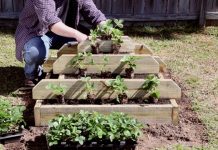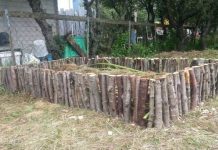Food preservation can be one of the biggest challenges for people who are learning how to garden. After spending all summer weeding, watering and composting; the thought of having to can 80 jars of tomato sauce can push someone over the edge.
I find myself more often turning to dehydration as a better option for a large majority of my produce. Learning how to dehydrate and store food will provide you with several benefits.
- No preservatives.
- Less space needed for storage.
- Stores well in excess mason jars.
- Easily re-hydrates.
- Can be done over a longer period of time in smaller batches; only using vegetables at their peak.
- Easily replaces store bought snacks; dehydrated fruit is an excellent alternative.
- Is a fraction of the cost of store bought dehydrated food.
Dehydrating is a simple process that anyone can do, but there are some tricks that result in a better quality product in appearance, texture and taste. I came across this video series produced by Tammy Gangloff several years ago that touches base on a majority of these tips. She has since written the number 1 selling book on Amazon about dehydrating food.
Building your own solar dehydrator is an excellent DIY project for those trying to be less dependent on the energy grid. Have fun stocking your pantry!
 Ultimate Dehydrator Cookbook, The: The Complete Guide to Drying Food, Plus 398 Recipes, Including Making Jerky, Fruit Leather & Just-Add-Water Meals
Ultimate Dehydrator Cookbook, The: The Complete Guide to Drying Food, Plus 398 Recipes, Including Making Jerky, Fruit Leather & Just-Add-Water Meals
Includes tips on selecting a dehydrator, as well as proper sanitation, storage, and re-hydration techniques. Individual entries on how to dehydrate all manner of berries, fruits, vegetables, greens, herbs, and edible flowers include information on how to prep, dehydration temperatures, and times.





